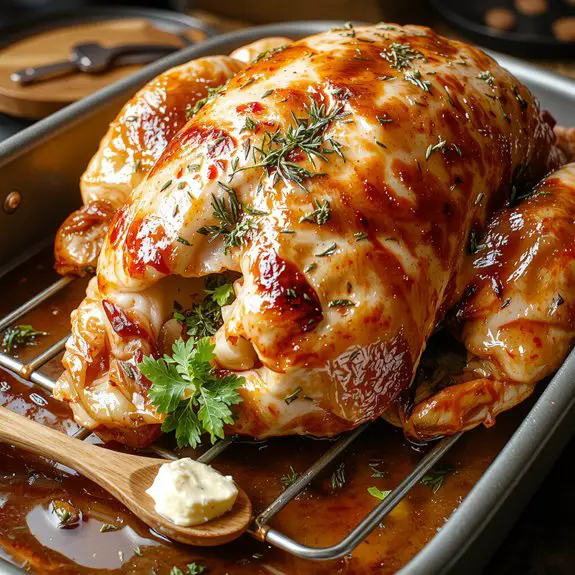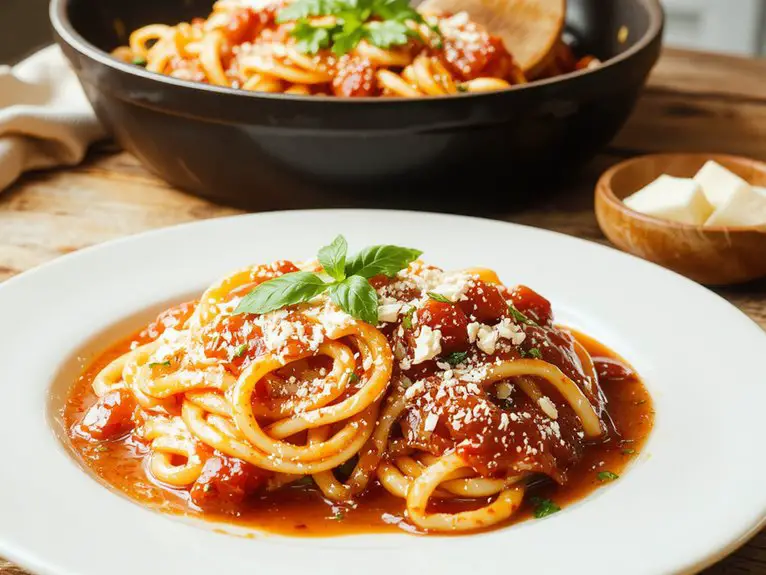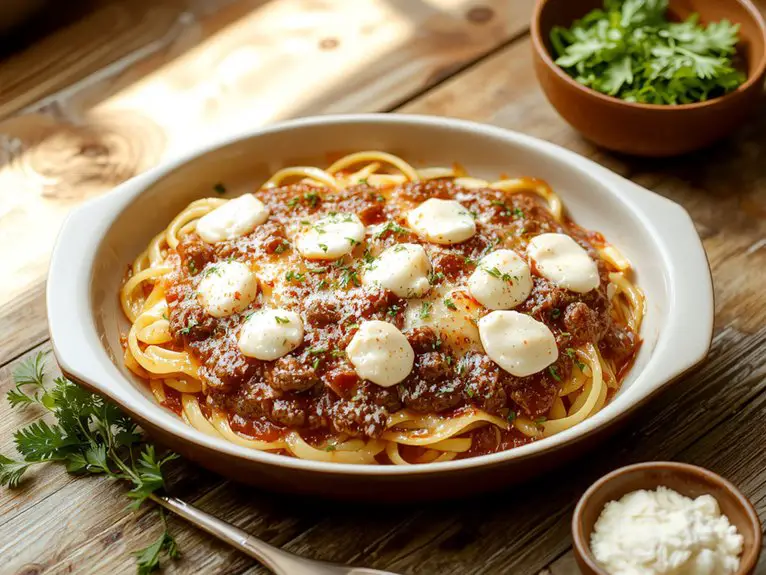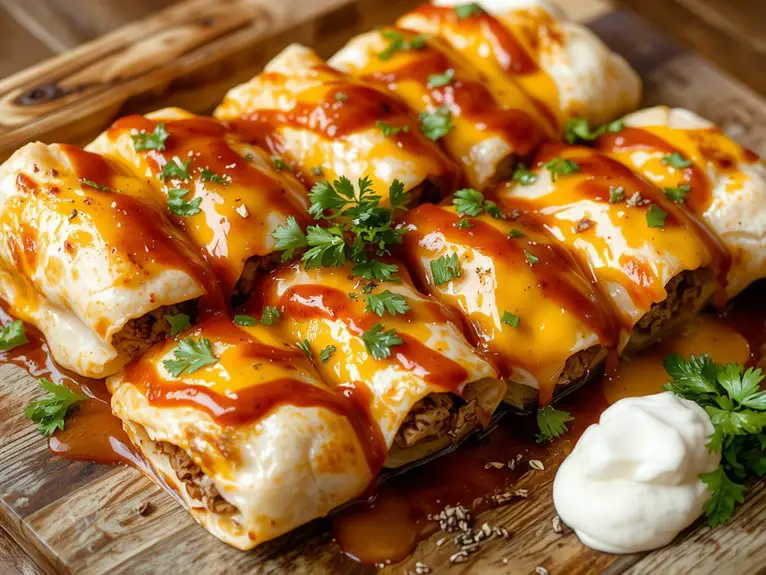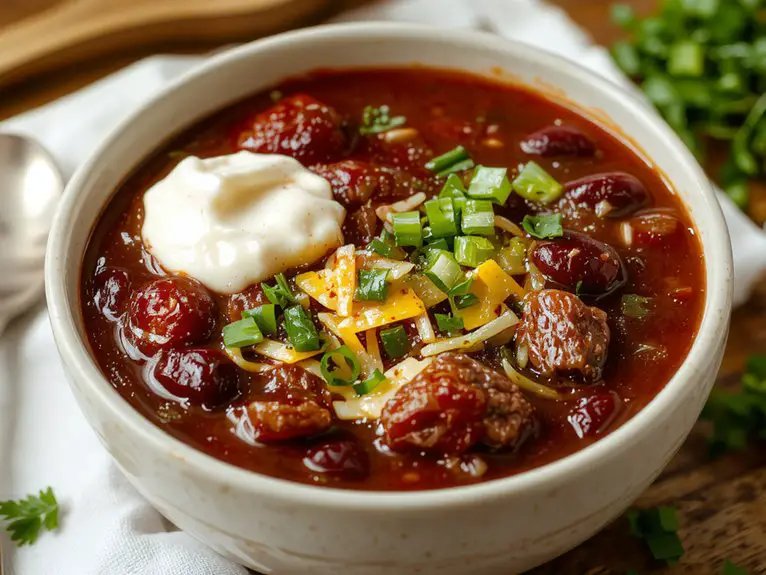Recipe
There’s nothing quite like the pride of serving a perfectly roasted homemade turkey—juicy, golden, and packed with flavor that’ll have everyone at the table begging for seconds.
This recipe isn’t just another bird; it’s the result of years of tweaking, testing, and downright obsession with getting that crispy skin and tender meat just right.
The secret? A simple but game-changing herb butter rub that seeps into every bite, plus a foolproof roasting method that guarantees even cooking without the stress.
Envision this: a fragrant, buttery aroma filling your kitchen, the skin crackling as you carve, and that first succulent slice melting in your mouth.
Trust me, once you try this method, you’ll never go back to dry, bland turkey again. Let’s make this the centerpiece of your next feast—you’ve got this!
Ingredients
Opting for fresh, high-quality ingredients is key to crafting a turkey that’s succulent, flavorful, and memorable. Here’s a breakdown of what you’ll need, along with some insider tips and swaps to guarantee your turkey shines.
- Whole turkey: A 12-14 pound bird is ideal for most gatherings. Fresh is best, but frozen works too—just thaw it properly in the fridge for 1-2 days.
- Unsalted butter (1 cup, softened): Butter is the backbone of flavor and moisture. Don’t skip it—it’s what gives the skin that golden, crispy finish.
- Fresh herbs (rosemary, thyme, and sage): These are non-negotiable for that classic, aromatic turkey flavor. If fresh isn’t available, dried herbs work—just use half the amount.
- Garlic (6 cloves, minced): Fresh garlic adds depth. In a pinch, garlic powder can substitute, but fresh is always better.
- Lemons (2, zested and halved): Lemon zest brightens the flavor, while the halves can be stuffed inside the bird for extra moisture.
- Onion (1 large, quartered): Adds sweetness and moisture when stuffed inside. Swap with shallots if preferred.
- Chicken or turkey stock (4 cups): Essential for basting and creating a rich gravy. Use low-sodium to control the saltiness.
- Kosher salt (3 tablespoons): Helps tenderize and season the meat evenly. Table salt works, but reduce the amount by half.
- Black pepper (1 tablespoon, freshly ground): Freshly ground pepper offers a robust flavor pre-ground can’t match.
- Olive oil (2 tablespoons): A light coat helps the skin crisp up beautifully.
For a little extra flair, consider stuffing the cavity with apple slices, celery, or even fresh bay leaves. These small touches elevate the dish from great to extraordinary.
How to Make the Best Juicy Herb-Roasted Turkey
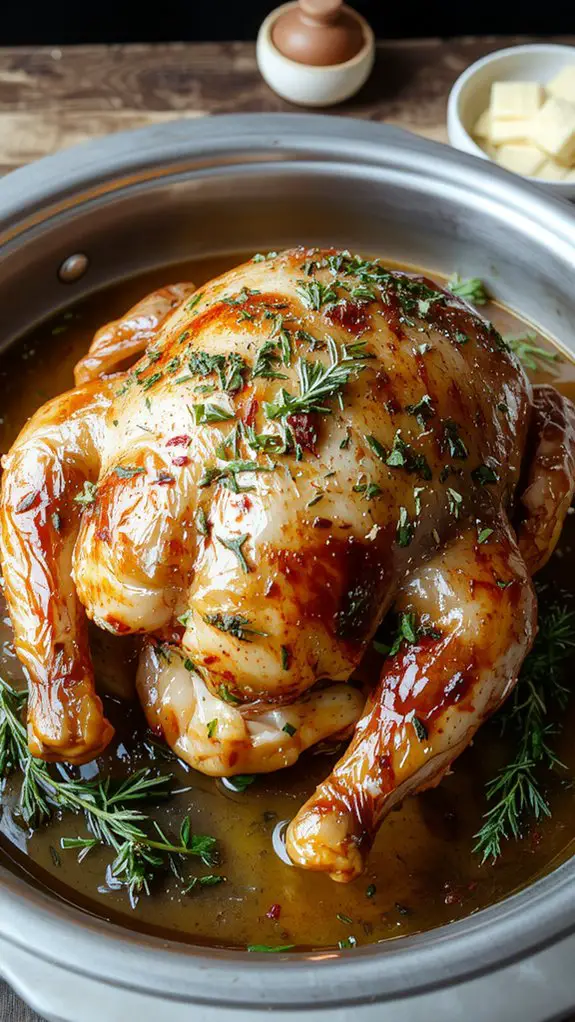
Spread the herb butter under the skin and all over the outside – This adds moisture and flavor directly to the meat. Use the back of a spoon if needed to spread it evenly.
Truss the turkey with kitchen twine – Tying the legs together helps the turkey cook evenly and maintains its shape. Tuck the wings under the body for extra security.
Place the turkey on a rack in a roasting pan, breast side up – Elevating the turkey allows heat to circulate and prevents the bottom from getting soggy.
Roast in the preheated oven – Plan for about 13 minutes per pound.
Use a meat thermometer to check for an internal temperature of 165°F (74°C) in the thickest part of the thigh.
Baste the turkey every 30 minutes with pan juices – This keeps the meat moist and enhances the flavor. Use a baster or spoon to redistribute the juices.
Tent the turkey with foil if the skin starts to brown too quickly – This prevents burning while allowing the turkey to continue cooking.
Let the turkey rest for 20-30 minutes after roasting – Resting allows the juices to redistribute, ensuring every slice is tender and juicy. Cover loosely with foil during this time.
Carve and serve – Use a sharp knife to slice the turkey. Start by removing the legs and wings, then slice the breast meat against the grain for maximum tenderness.
Nutrition
This homemade turkey recipe is a nutritious option for any meal. Below are the nutritional facts per serving.
| Nutrient | Amount per Serving |
|---|---|
| Calories | 230 |
| Protein | 34g |
| Fat | 8g |
| Carbohydrates | 0g |
| Cholesterol | 90mg |
| Sodium | 70mg |
Chef Tips
Though roasting a turkey might seem straightforward, I’ve picked up a few tricks over the years to guarantee it turns out juicy and flavorful every time.
Always brine it overnight for moisture. Pat the skin dry before roasting to secure crispiness.
Baste every 30 minutes with melted butter and broth. Let it rest for 20 minutes after cooking—this keeps the juices locked in.
Trust me, it’s worth it.
Frequently Asked Questions
Can I Use a Frozen Turkey for This Recipe?
Yes, I can use a frozen turkey, but I’ll need to thaw it completely first. I’d plan for a few days in the fridge or use cold water if I’m short on time. Cooking it frozen isn’t safe.
How Do I Know if the Turkey Is Fully Cooked?
I’ll know my turkey’s fully cooked when a meat thermometer reads 165°F in the thickest part of the thigh, breast, and wing. I’ll also check that the juices run clear and the legs wiggle easily.
Can I Substitute Fresh Herbs With Dried Herbs?
I can substitute dried herbs for fresh herbs, but I’ll use less since dried herbs are more concentrated. Generally, I’ll use one-third the amount of dried herbs compared to fresh to avoid overpowering the dish.
What Side Dishes Pair Well With This Turkey?
I’d say roasted vegetables like carrots, Brussels sprouts, and sweet potatoes work perfectly. Creamy mashed potatoes or garlic butter green beans are classics, and a fresh cranberry sauce adds that tangy touch. Don’t forget stuffing!
How Long Should I Let the Turkey Rest Before Carving?
Let the turkey rest for at least 20 to 30 minutes before carving. I’ve found this allows the juices to redistribute, keeping the meat moist. Cover it loosely with foil to retain warmth while it rests.


